 |
|||||||||||||||
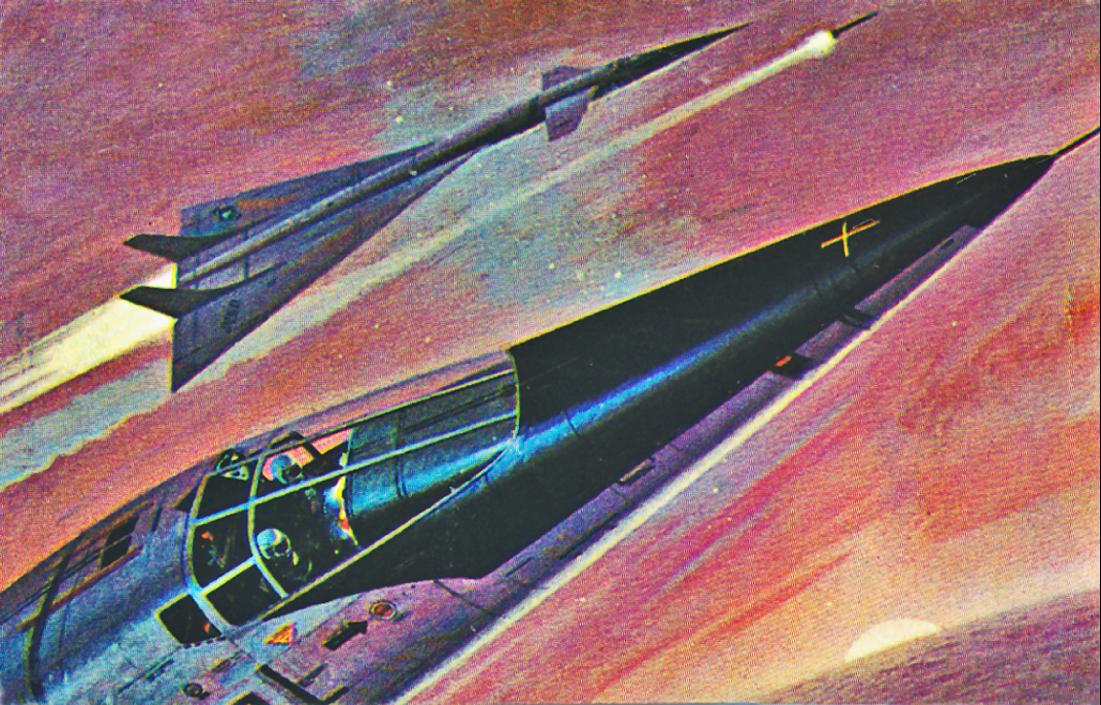 |
||
The North American Aviation B-70 Valkyrie was envisioned as a Mach 3 bomber to replace the aging Boeing B-52 Stratofortress. Only two test versions of the Valkyrie were constructed (as the XB-70A), and the B-52 remains a front-line bomber for the United States nearly 70 years after it first took flight. author's collection |
||
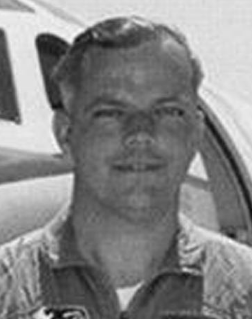 |
||||||||||
 |
||||||||||
Joe Walker was the chief test pilot for NASA on the X-15 rocket plane. After 25 flights, he was moving onto another program: the XB-70A. The triplesonic bomber was coming to NASA for flight test and evaluation in conjunction with the upcoming (and eventually ill-fated) American commercial supersonic transport (SST) program. Not long before Joe was to take his first flight in the Valkyrie, he was asked to participate in a five aircraft formation flight for a series of commercial photographs for jet engine manufacturer General Electric. After being asked to move his F-104 closer to the B-70's right wing, the smaller fighter was caught in the wing tip vortex, flipped over the top of the bomber, broke into three pieces and exploded. Joe Walker was killed instantly. Minutes later, the B-70 also went down, killing co-pilot Carl Cross. B-70 pilot Al White, Scott Crossfield's backup pilot on the X-15 for North American Aviation, survived, but sustained serious injuries.
This page is dedicated to the memories of Joe Walker and Carl Cross. |
||||||||||
Joseph A. Walker |
Maj. Carl S. Cross |
|||||||||
— The XB-70A Valkyrie — |
||
 |
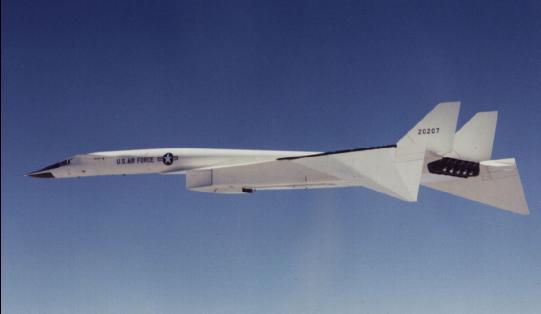 |
|||
Prototype XB-70, which survives today in the National Museum of the U.S. Air Force. |
Second XB-70, which would later be destroyed in the midair collision. |
|||
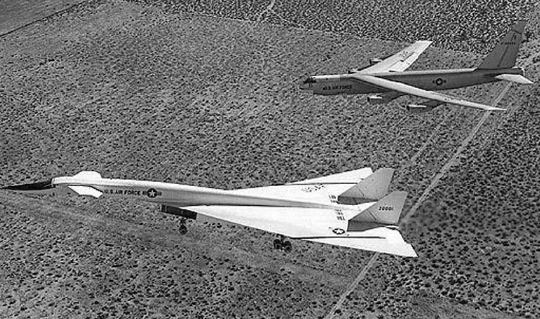 |
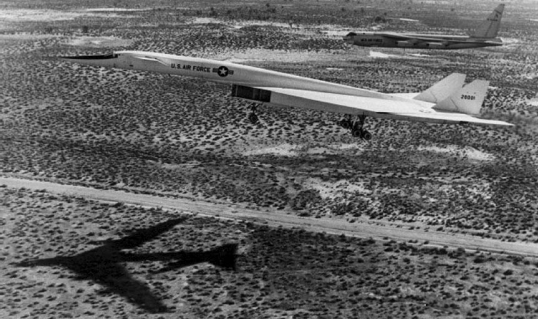 |
|||
B-70 no. 1 coming in for a landing, with a B-52 as a chase plane. Seeing the two aircraft side-by-side gives some idea of how massive the B-70 is. The nose sits three stories above the ground when sitting idle on the tarmac! |
||
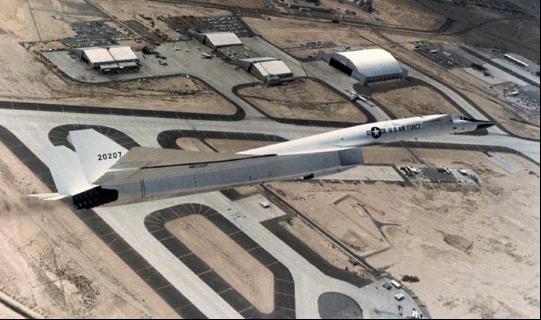 |
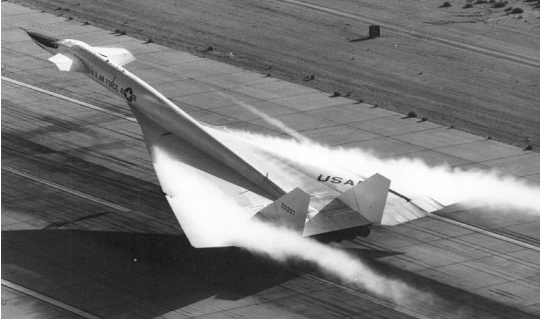 |
|||
No. 2 flies over Edwards AFB. |
No. 2 comes in for a landing. Note the roiling wing tip vortices that are generated. |
|||
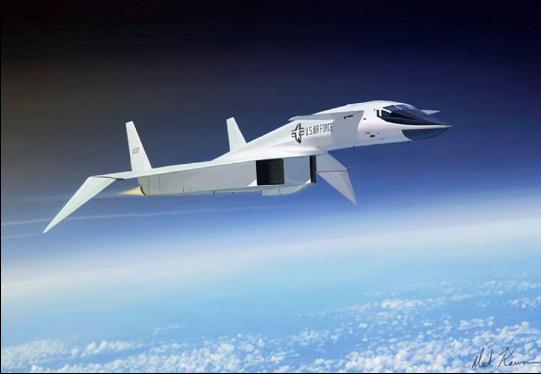 |
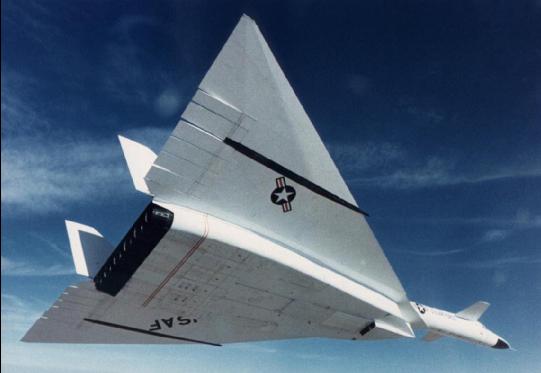 |
|||
"Riding the Shockwave" by Mark Karvon. |
An underside view of the massive wing of the B-70. |
|||
— Monday, 8 June 1966: The Formation Flight — |
||
The Valkyrie was finished with an early morning set of flight tests when it met up with the other four aircraft that would complete the photographic formation: A T-38 Talon and F-4 Phantom II took station off the left wing of the XB-70, while an orange-tailed NASA F-104 Starfighter with Joe Walker at the controls and an F-5 Freedom Fighter finished the V-formation on the right side. Between the five aircraft were a total of thirteen GE engines, a great public relations opportunity.
photos of formation and accident by John Zimmerman, Clay Lacy Aviation |
||
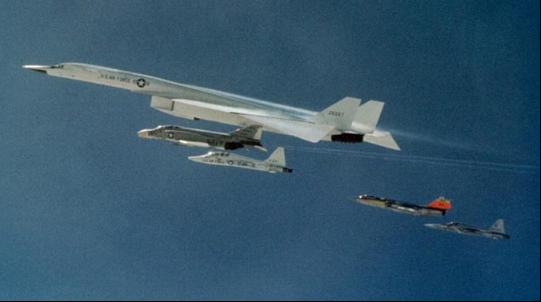 |
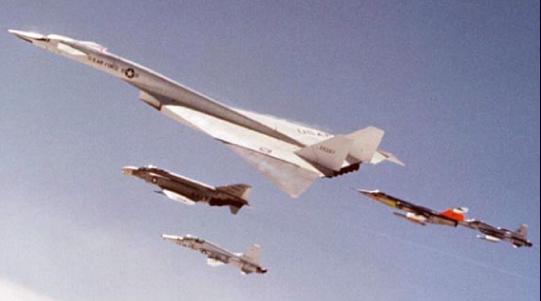 |
|||
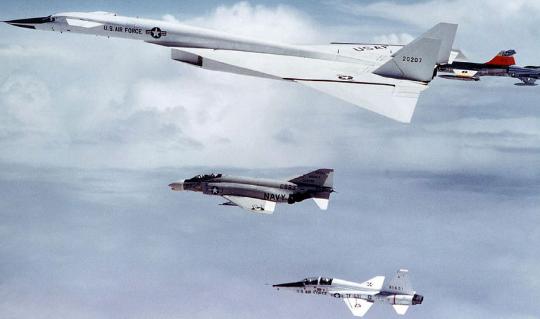 |
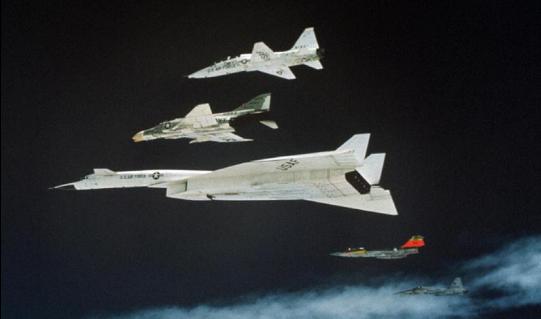 |
|||
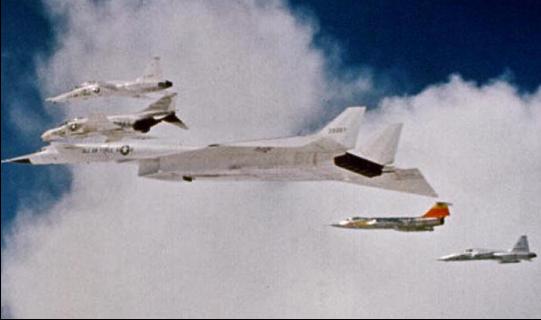 |
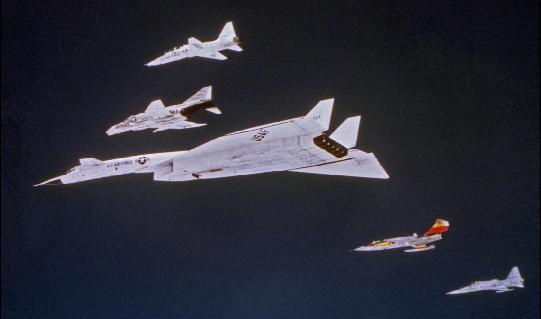 |
|||
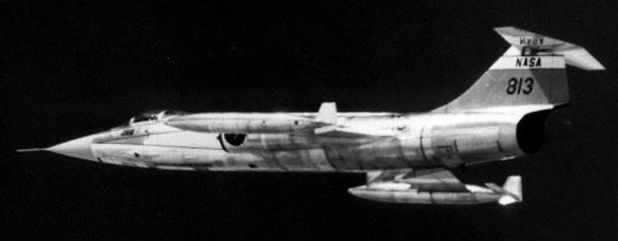 |
||
Joe Walker's F-104, tail no. 813, moments before the collision. |
||
— 09:26 "Midair, Midair, Midair" — |
||
Pilot and aerial director Clay Lacy, in a Gates Lear Jet, flew nearby. His in-flight photographer, John Zimmerman, captured the action in stills and movies. The formation of aircraft was beautiful against the blue sky, until at 9:26 a.m. the cry of “Midair! Midair! Midair!” was shouted across the radio.
The geometry of the XB-70 and F-104 led to disaster. The bomber’s highly swept delta wing came back to a sharp tip, which created huge, invisible vortices roiling backward. The tall T-tail of Walker’s Starfighter was forty feet behind his cockpit, and had become dangerously close to the bomber’s drooped wingtip. From Joe’s position, it appeared he was at a safe distance from the wing, but when he slid in a little too close, the vortex caught his Starfighter like a gnat, the top of the T-tail coming up from below, contacted the bomber’s wingtip,which broke away, tossing Joe and his plane up and over the top of the Valkyrie.
Walker was almost immediately upside down and sideways to the air stream. His F-104 slid back along the top of the bomber, striking the twin vertical tails. The XB-70‘s right tail broke apart when struck by the rear fuselage of Walker’s plane. Continuing on toward the left side of the bomber, the F-104 struck the left tail, shearing it completely off the aircraft. The cockpit and forward fuselage of F-104 no. 813 separated, and, at 2.4 seconds into the sequence, contacted the XB-70’s left wing as it rolled off into the abyss. Walker probably died at that moment, never having a chance to eject. The rest of his fighter continued off the Valkyrie’s back end, exploding into a fireball within seconds of the collision. |
||
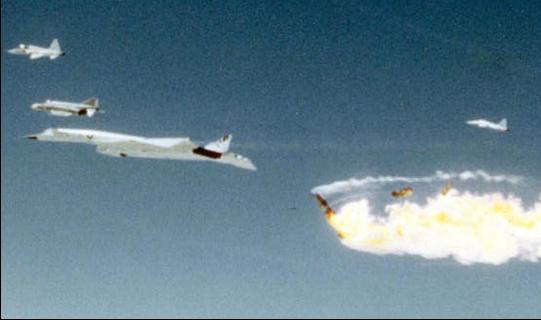 |
 |
|||
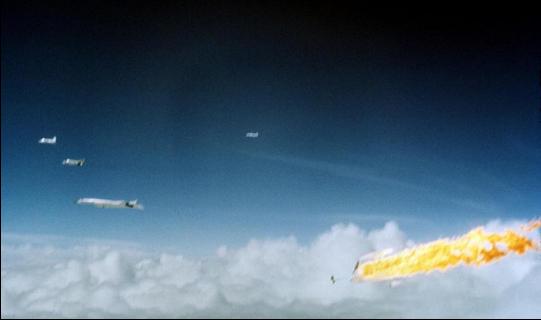 |
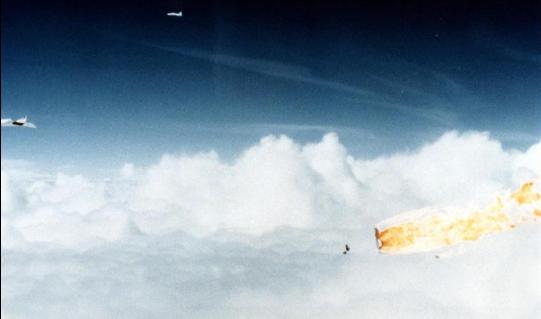 |
|||
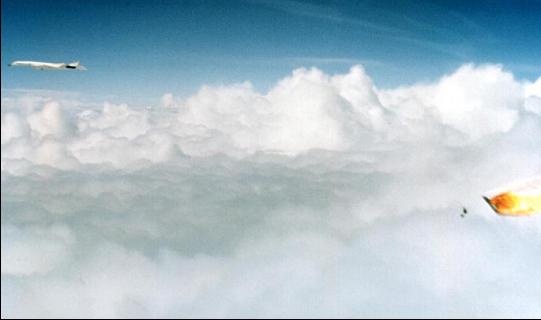 |
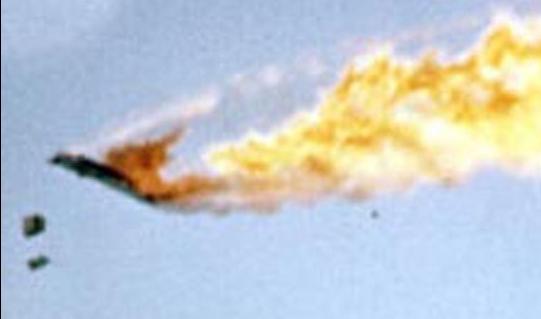 |
|||
 |
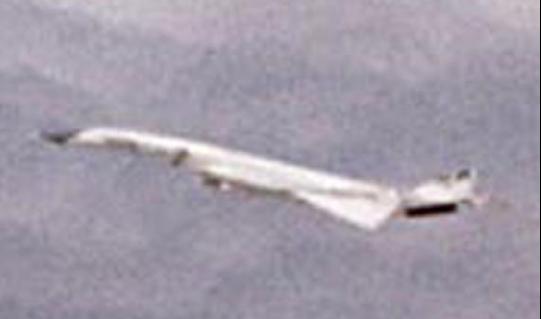 |
|||
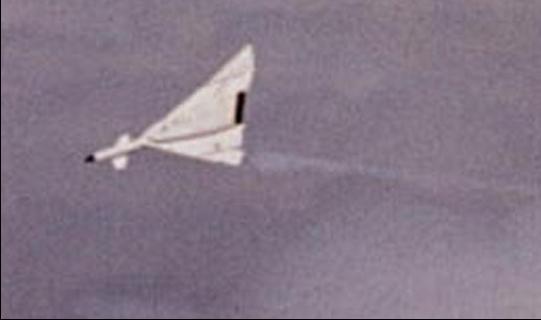 |
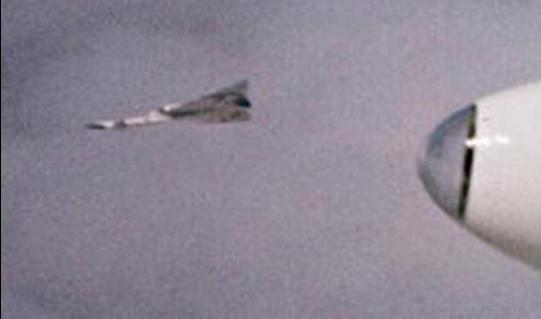 |
|||
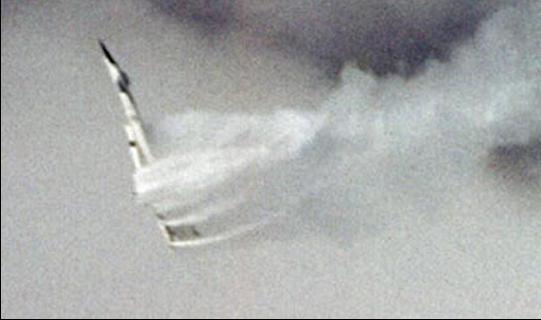 |
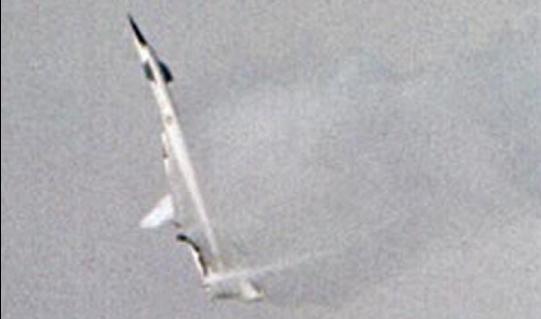 |
|||
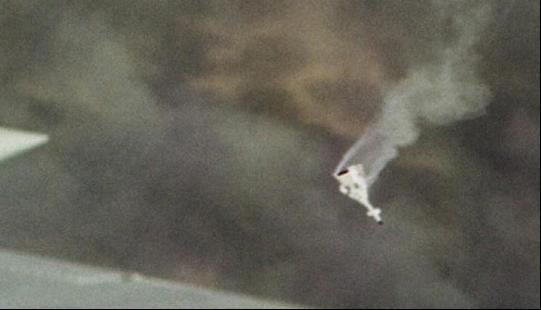 |
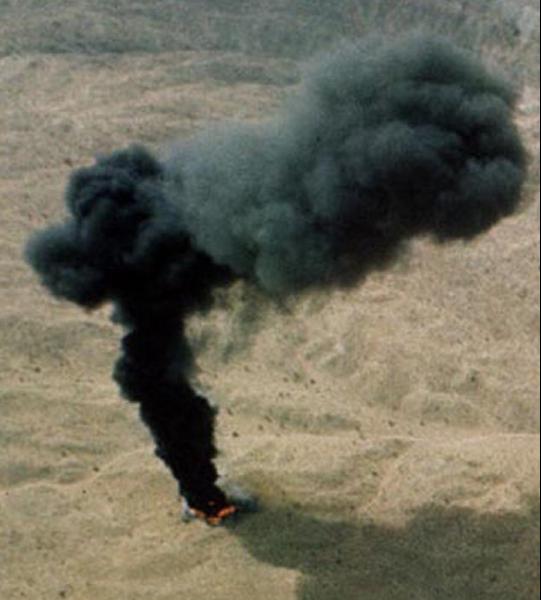 |
|||
Aboard the stricken Valkyrie, White and Cross first heard the frantic call on the radio, without even realizing it was their plane that had been involved. White said later they assumed it must have been a collision between two of the outlying fighters. The bomber continued to fly straight, but then started to lose altitude and veer downward.
The other aircraft peeled away to clear the area. Sixteen seconds after the accident, the XB-70 started to roll onto its back. White said later, “What happened was, it yawed right and rolled right. Then it was upside down and nose down, and then right side up and nose up. It did this twice, and the second time around, a big piece of the left wing [probably weakened by Walker’s impact] broke off.”
The forces exerted were horrendous as White and Cross both attempted to eject, using the bomber’s unique capsule system. Because of those gs, White was barely able to leave the plane, his right elbow actually caught between the capsule’s clamshell halves as they closed. In excruciating pain, Al finally worked his arm inside. The doors slammed shut and the capsule shot away from the aircraft. Cross never ejected and died as XB-70 no. 2 impacted the desert, east of Edwards. As he floated down under the parachute, still encased inside the capsule, White said, “I heard the XB-70 hit. It made a terrible explosion.” The airbag that was to cushion the capsule’s landing, failed to open. White hit the dirt at an estimated forty-three gs, injured but alive. |
||||
— The Wreckage Sites — |
||
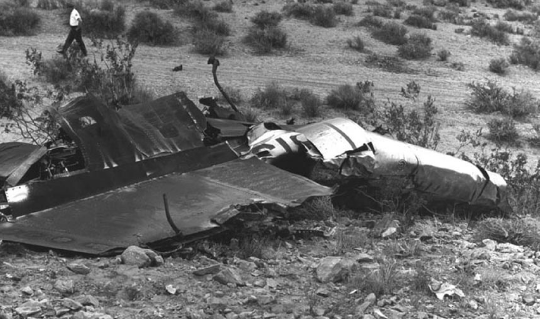 |
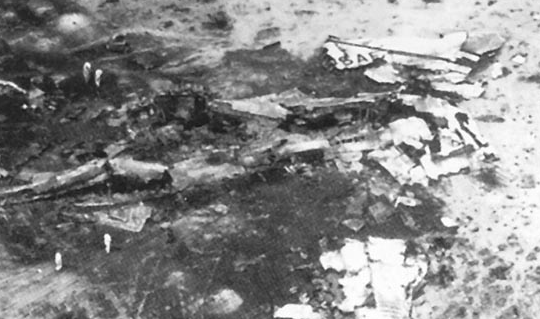 |
|||
The wreckage of Joe Walker's F-104. |
The B-70 crash site. Note the "USAF" on the remains of one of the bomber's wings. |
|||
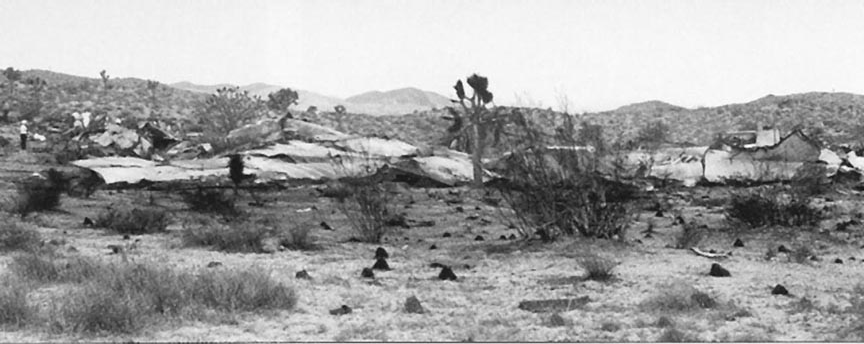 |
||||
Person |
||||
To give an idea of the scale of the B-70's crash site, note the person standing near the left middle of the above photo. |
||
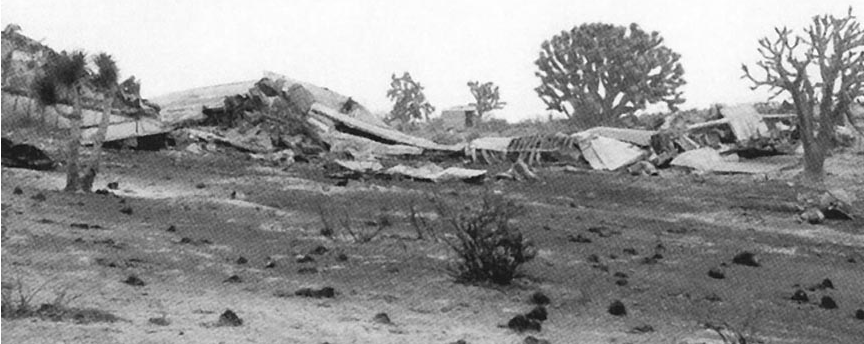 |
||
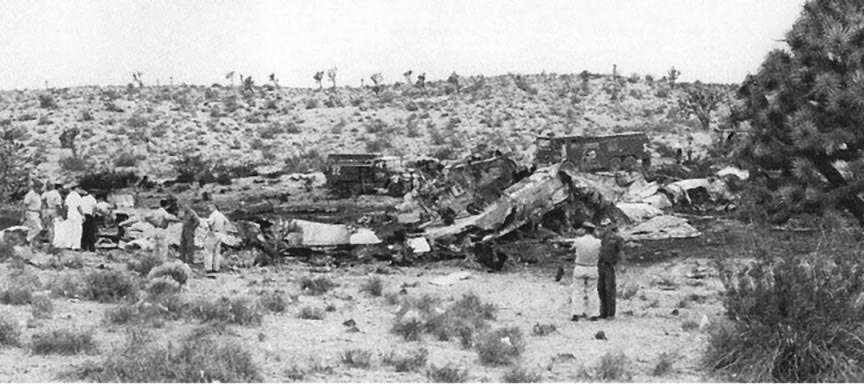 |
||
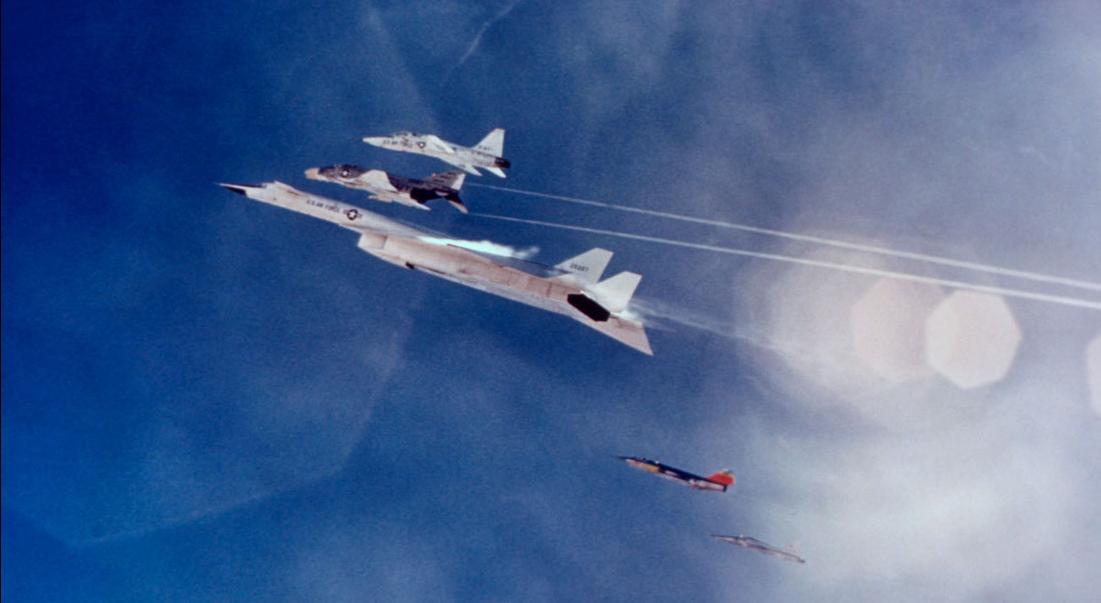 |
||